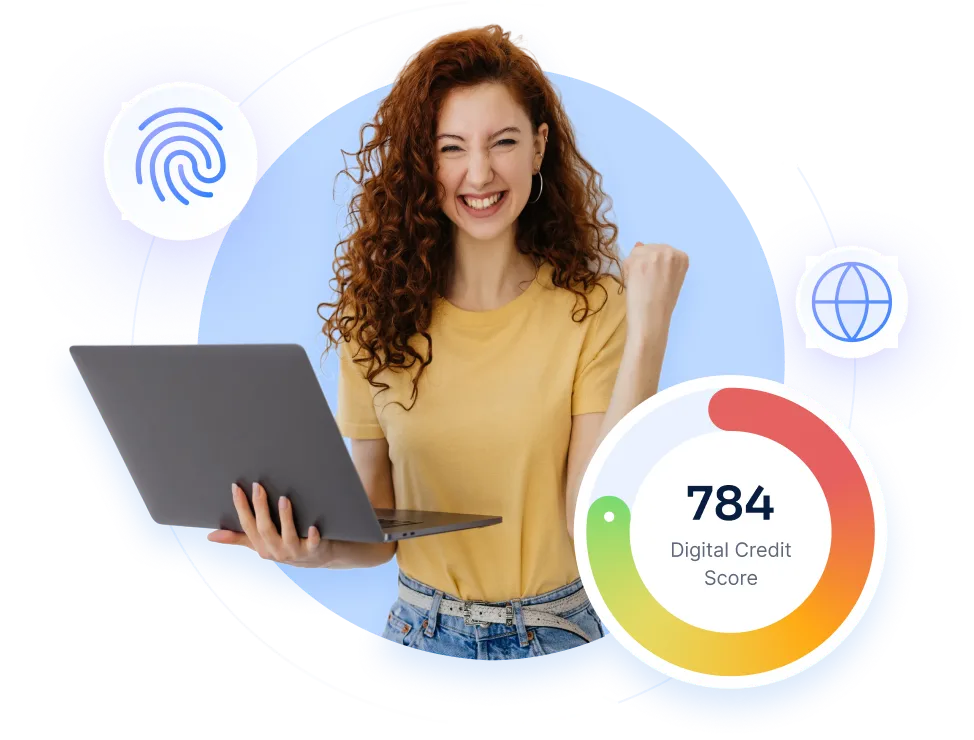Alternative Credit Scoring in India - How to Issue Loans to the Unbanked Population
The development features of the lending sector in India and the role that alternative credit scoring plays in it.
.webp)
In India, a huge portion of the population is either underserved by banking services or uses them insufficiently.
As a result, they cannot obtain credit from lending organizations that rely on traditional scoring methods to assess borrowers.
According to the World Bank, 22% of India's adult population remains unbanked. Their lending is only possible through non-traditional data, which goes far beyond credit history and rating.
In this article, we discuss the development features of the lending sector in India and the role that alternative credit scoring plays in it.
The rapid evolution of India’s economy and financial sector
India is a country with a developing economy, ranking among the top five global leaders in terms of GDP volume.

The banking sector plays a crucial role in shaping this country's economy. It provides financial stability and security to the state's residents, simplifies asset management, and meets the need for lending.
Loan services in India are becoming increasingly in demand. According to the Reserve Bank of India, the total volume of outstanding consumer loans from 2013 to 2023 increased fivefold, reaching 49.9 trillion rupees:

However, recently, not only banks have been involved in lending to the population.
The financial sector of India is currently undergoing a significant digital transformation. In particular, the digital lending industry is growing rapidly.
Statista reports that the volume of the digital lending market in India was only $9 billion in 2012, but by 2023, this figure reached a record $350 billion.

Alternative data and financial inclusion in India
Around 190 million Indians still lack access to banking services. This means they cannot rely on traditionally obtaining credit—based on their credit history and rating.
The use of alternative data for credit scoring allows lending organizations to expand their potential customer base while enabling credit access for unbanked consumers.
Alternative data sources can include any information about consumers' offline or online activities.
Given India's population's activity in the internet economy, alternative data can provide a wealth of objective information about borrowers.
The statistics below demonstrate the relevance of alternative data for Indian lenders.
According to Statista analysts, in 2022, 76.6% of India's population was covered by mobile operator services, and by 2026, this figure is forecasted to increase to 86%.

The same source reports that in 2022, 45 million households across India paid for 99 million video subscriptions.
The number of internet users in the country is also gradually increasing. If in 2022, there were just over 1 billion, by 2030, there will be an estimated nearly 1.5 billion users.

The active usage of various online services provides enormous opportunities for digital footprint analysis and the assessment of borrowers' creditworthiness based on the results.
Alternative data shaping the future of lending in India
Even though the alternative credit scoring ecosystem in India is still in its development stage, many lending organizations already use various alternative data:
- Information from social nets
- E-commerce transactions
- Phone-related location data
- SMS and browsing history
- Education
- Monthly salary and career experience
- Utility bill payments
Indian lenders understand the importance of using non-traditional data in credit scoring. This is confirmed by the Aite Group's study, which shows that investments in developing India's largest alternative data sources are constantly growing.
The advantage of alternative data in Indian lending
Alternative scoring methods offer several advantages to lending organizations in India.

- Real-time data analysis. Alternative scoring systems can analyze data in real time, allowing for more up-to-date assessments.
- Financial inclusion. Alternative scoring promotes financial inclusion by providing credit opportunities to credit-invisible people.
- Risk and default reduction. Lenders can make better-informed decisions on loan applications by using alternative data. It gives comprehensive and up-to-date information about borrowers.
- Economic efficiency. Alternative credit scoring involves automated data analysis, reducing the need for manual labor and associated costs.
- Flexibility and adaptability. Implementing innovative technologies such as artificial intelligence and machine learning allows credit institutions to adapt more quickly to changing market conditions.
It gives comprehensive and up-to-date information about borrowers and improves credit risk evaluation in real time.
How to choose an alternative data provider - a to-do list for the Indian lenders
In today’s market, lending organizations can choose from a growing number of alternative credit data providers offering diverse verification tools and scoring inputs.

To choose the one that best meets the needs of your organization, follow these steps:
- Carefully study the offerings of each vendor. Pay attention to the volume and cost of services and review customer feedback.
- Make sure to attend a demo. During this meeting, you can learn all the details and discuss your needs and business specifics with the provider.
- Inquire about the provider's experience in the Indian market. Ask which companies they work with, what local services they provide data from, and how well they meet regional requirements.
- Run a Proof of Concept project. This will allow you to assess how useful the data is for your scoring.
- Evaluate the value of the data against its cost. You should determine the economic feasibility of purchasing this data.
Such an approach to selecting an alternative data for Indian fintech provider will ensure that you don't waste money and achieve the desired results.
RiskSeal – an alternative data provider for the Indian lenders
The RiskSeal team collaborates with Indian organizations and deeply understands the region's specifics.
In addition to the 200+ most popular platforms, Indian clients get alternative data from the following services:
E-commerce platforms
- Flipkart
- ShopClues
Marketplace
- SnapDeal
Subscription-based platforms
- Alt Balaji
- Gaana
Please note that we are constantly evolving and adding new services. The information in this material is current as of March 2024.

Download Your Free Resource
Get a practical, easy-to-use reference packed with insights you can apply right away.

Download Your Free Resource
Get a practical, easy-to-use reference packed with insights you can apply right away.




FAQ
How does RiskSeal cater to the specific needs of Indian credit organizations?

At RiskSeal, we understand the Indian credit market's needs, which has about 190 million unbanked population. We provide lending organizations with alternative data to expand their clients' base.
What data does RiskSeal provide from Indian e-commerce and digital platforms?

We provide data from e-commerce platforms Flipkart, ShopClues, and SnapDeal, as well as identify subscribers of the video platform Alt Balaji and music streaming service Gaana.
What features are specific to lending and credit scoring in India?

In India, many lenders rely on traditional credit scoring, which evaluates borrowers based on their credit score—a three-digit number ranging from 300 to 900.
The higher the score, the higher the borrower's creditworthiness. However, considering the number of credit-invisible people in the country, more and more lending organizations are turning to alternative credit scoring.
What is alternative credit scoring, and how does it operate in India?

Alternative credit scoring involves assessing borrowers' creditworthiness using alternative data sources in addition to or instead of traditional data.
In India, such sources include utility bill payments, phone-related location data, SMS and browsing history, information from social networking platforms, education, monthly salary, and career experience.
Analyzing data on paid services and e-commerce platforms also yields positive results.
Why should Indian credit organizations pay attention to alternative data?

Companies using traditional scoring cannot meet India's population's credit needs. This is because a large portion of the population is credit-invisible and cannot obtain credit based on their credit score.
Using alternative scoring allows lending to such individuals, reduces risks, lowers the likelihood of default, and allows quick adaptation to market conditions.
How should a credit company in India select an alternative data provider?

Several steps should be taken to choose the optimal alternative data provider: study the market offerings, attend demos, and assess the provider's experience in the Indian market.
Subsequently, test the data and evaluate the value of the data against its cost.

.svg)
.webp)

.webp)

.webp)
